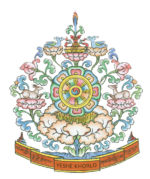Alaya and Impure Appearance-Making
Alexander Berzin
December 30, 2001
revised September 29, 2002
Chittamatra and Madhyamaka Assertions
All four traditions of Tibetan Buddhism accept that the Chittamatra (sems-tsam, mind-only) system of Indian Buddhist tenets asserts alayavijnana (kun-gzhi rnam-shes, all-encompassing foundation consciousness, storehouse consciousness) as a truly existent (bden-grub) unclear consciousness that underlies all moments of cognition before enlightenment. It serves as the basis for imputation of the habits of unawareness and of karma, continues from lifetime to lifetime, but ceases with the attainment of Buddhahood.
[See Basic Features of the Gelug-Chittamatra System.]
The non-Gelug traditions – Sakya, Kagyu, Nyingma – accept that the Madhyamaka tenet systems that make positive assertions about reality (all Madhyamaka systems other than Prasangika) also assert alayavijnana. These Madhyamaka systems, however, assert only a conventionally existent (tha-snyad-du yod-pa) alayavijnana, not an ultimately existent one (don-dam-du yod-pa). The conventionally existent alayavijnana, however, lacks true existence.
The Gelug tradition asserts that no Madhyamaka system accepts even the conventional existence of an alayavijnana.
Sakya Explanation
The mainstream Sakya tradition asserts, in a similar manner to Gelug, that when clear-light mental activity is manifest, it gives rise to only pure appearances (dag-pa’i snang-ba). The habits (bag-chags) of unawareness (ma-rig-pa, ignorance) imputed on the clear-light mind do not give rise to impure appearances (ma-dag-pa’i snang-ba) at that time. They only give rise to impure appearances when clear-light mental activity is not manifest. In this context, impure appearances refer to appearances that are not beyond words and concepts, while pure appearances refer to appearances that are beyond words and concepts.
Sakya calls clear-light mental activity the „causal alaya continuum“ (kun-gzhi rgyu’i rgyud, the causal everlasting continuum of the all-encompassing foundation) and the „ultimate alaya“ (mthar-thug-gi kun-gzhi, ultimate all-encompassing foundation). It is the ultimate foundation or source of both impure and pure appearances as defined above. Gelug does not apply the term alaya to clear-light mental activity.
Sakya does not explain alayavijnana, then, as a source of impure appearances distinct from the causal alaya continuum. With the attainment of enlightenment, the alayavijnana transforms (gnas-‘gyur) into the causal alaya continuum, but not in the manner in which a seed transforms into a sprout. Both the alayavijnana and the causal alaya continuum have been ever present before enlightenment. With the attainment of enlightenment, only the causal alaya continuum goes on. The continuity of the alayavijnana ceases.
The provisional alaya (gnas-skabs-kyi kun-gzhi, provisional all-encompassing foundation), uniquely asserted by Sakya, refers to the four mandala-seats (gdan dkyil-‘khor bzhi):
1. energy-channels,
2. subtle syllables within them,
3. creative energy-drops,
4. energy-winds.
Based on these, the appearance-making aspects (gsal-cha, clarity) of ultimate alayas produce two inseparable quantum levels of appearances of our bodies, speech, minds, and the inseparable simultaneity of the three. The two quantum levels are their gross appearances in our usual human forms and their subtle appearances as Buddha-figures. In this context, impure appearances refer to the former and pure appearances to the latter.
The provisional alaya ceases with the attainment of enlightenment and the four mandala-seats transform into the four Buddha-bodies.
Karma Kagyu Explanation
The Karma Kagyu tradition differentiates the deep-awareness alaya (kun-gzhi ye-shes, deep-awareness that is an all-encompassing foundation) from the specific-awareness alaya (kun-gzhi rnam-shes, specific awareness that is an all-encompassing foundation). Specific-awareness alaya is synonymous with alayavijnana. As in the relationship between the environment in which sentient beings are based (or live) (rten) and sentient beings themselves who are based (who live) in it (brten), specific-awareness alaya is the environment in which deep-awareness alaya is based and deep-awareness alaya is what is based on it.
Although the two alayas are mixed like milk and water, the habits of unawareness are imputed only on the latter. When clear-light mental activity is manifest, these habits do not give rise to impure appearances, not beyond words and concepts. They give rise to them only when that activity is not manifest.
Nyingma Explanation
The Nyingma tradition differentiates basis pure awareness (gzhi’i rig-pa, basis rigpa), as the primordial deepest alaya (ye-don kun-gzhi, primordial deepest all-encompassing foundation) from the alaya for constant habits (bag-chags-kyi kun-gzhi, all-encompassing foundation for habits). The latter is synonymous with alayavijnana.
Before enlightenment, the everlasting continuum of basis rigpa has with it a factor of dumbfoundedness (rmongs-cha). This factor is equivalent to the unawareness of not knowing how rigpa exists – a type of unawareness included within unawareness regarding all phenomena and preventing omniscience. Because of this factor of dumbfoundedness, basis rigpa functions as an alaya for constant habits and, through a complex mechanism, produces impure appearances, not beyond words and concepts, during conceptual and nonconceptual cognition with limited awareness (sems).
When we access essence pure awareness (ngo-bo’i rig-pa, essence rigpa), which is the primal purity (ka-dag) aspect of rigpa – primally pure of all fleeting stains such as habits – basis rigpa does not function as an alaya for constant habits. It gives rise only to pure appearances, beyond words and concepts.
Pages with Similar Content:
The Major Facets of Dzogchen
Commentary on An Aspiration Prayer for the Definitive Meaning of Mahamudra – 2 Eliminating Confusion about the Practice of the Path
